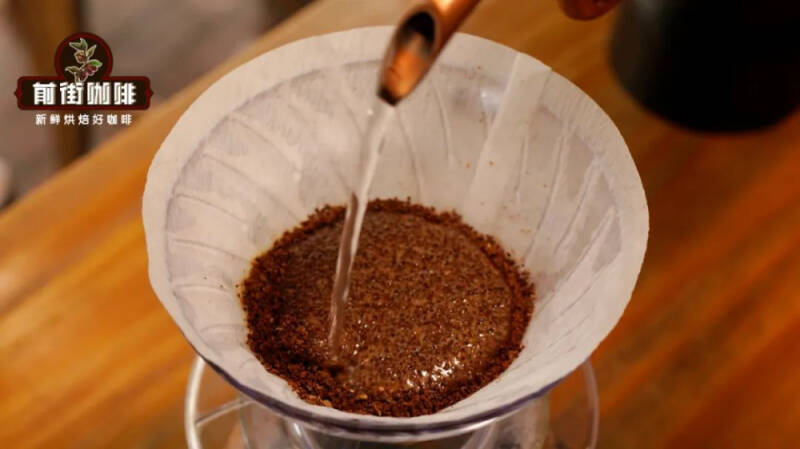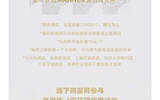Why is the hamburger bulging and sunken when the coffee is steamed? is it normal?

Steaming, a preparatory action of wetting the powder layer with a small amount of water and waiting for tens of seconds. When the powder layer forms a fluffy and regular "drum bag" as scheduled, we will probably know that the coffee beans are still fresh and in a good state of taste. If the powder layer does not mean to bulge at all, or even directly concave, the coffee beans are likely to be stale for too long, and the heart may guess that the coffee tastes ordinary.

In addition to the above two results, a careful partner told Qianjie that he also found a third situation, that is, after the water injection, although the coffee powder layer bubbled briefly, it began to collapse in the twinkling of an eye, and the powder bed caved in in an instant. Is this a normal phenomenon?
Why does the powder layer expand and collapse immediately? The reason why steaming can be bulged into a bag is mainly due to the effect of particles adhering to each other after wet water. With the synchronous release of the gas, the whole coffee powder will be propped up, thus forming a loose and stable exhaust structure.
Once the stable structure between the powder particles is destroyed by the "external force", a large gap that cannot be bonded appears somewhere in the drum bag, and the gas will collapse naturally without the support of the powder layer. Since the particles after water absorption have expanded, which means that these coffee powders have been in a state of "exhalation", then we can first rule out the situation that the coffee beans are not fresh. Almost exhaust coffee beans show little sign of bulging when steaming, and the flavor will be greatly reduced.
So what causes this "expansion and then subsidence" situation? According to the previous street cooking experience, it is mainly caused by the following reasons.
In general, the saturated water absorption of coffee powder is about twice its own weight, so whether it is the daily reference cooking tutorial or the extraction experience of some baristas, the amount of steaming water is always twice the amount of powder. That is, 15 grams of powder corresponds to 30 grams of water. However, for some newcomers who are relatively unfamiliar with the means of flow control, sometimes it is inevitable that they inadvertently inject more water. If you flush the shallow roasted coffee beans with weak water absorption, not only the steaming liquid dripping into the pot will increase, but also the drum bag may be "pressed" by gravity.
Take, for example, the amount of 15 grams of powder commonly used in brewing Yega Chuefei coffee in Qianjie. A small stream of water injected 30 grams around the center can not only moisten all the powder grains, but also keep the drum bag stable after 30 seconds. When steaming with more than 45 grams of hot water, we can find that the water level of the powder layer rises, more coffee flows into the next pot, and the newly bulged hamburger shrinks slightly when all the steaming liquid drips into the pot.
Coffee powder grinding is too rough, friends who are familiar with hand-pulping parameters should know that a good cup of coffee can not be separated from uniform and moderate grinding thickness. For hand-punching beginners, Qianjie is usually recommended to first detect the thickness of sugar with the naked eye, and then combined with whether the extraction time falls in a reasonable range (about 2 minutes), and then judge whether fine-tuning, coarse or fine adjustment is needed. When there are conditions, it is best to be equipped with a standard sieve No. 20 of caliber 0.85mm to screen and control the grinding scale within the thickness of 7080% of the screening rate.
Coffee grinding is too coarse, the most obvious consequence is that water has not yet infiltrated into the coffee particles, has already flowed into the pot, resulting in insufficient coffee extraction. In the steaming stage, when the larger coffee particles first come into contact with water, gas will be discharged from the surface to allow the powder layer to expand first, and as the hot water flows through the gaps between the large particles to the next pot, these cracks do not have time to "glue" back. Soon the drum began to contract and cause the appearance of collapse.
Too strong a small flow of water gently circling from the center to the outside is a stuffy water injection technique performed by most people, so that the resulting hamburger will slowly expand from the middle to all around until it fills the bottom of the entire filter cup.
If you use a more intense water injection, and only focus on the center of the small circle of water injection, then the water column directly impact the powder layer, resulting in a larger distance between particles, while the center can hold up mainly because the gas in the discharge hinders the decline of water, when all the gas is discharged, the water begins to flow down, and the rest is an empty powder layer, which is easy to collapse.
To sum up, it is obviously not a normal phenomenon for the powder layer to bulge up and stay again during steaming. Although it does not directly indicate that the coffee tastes wrong, it does reflect that there is something wrong with our parameters or methods, and we need to find out the cause in combination with the final taste, and then "prescribe the right medicine" and solve the problem in detail.
-END-
Front Street Cafe
No. 10 Baoqian street, Yandun road, Dongshankou, Yuexiu district, Guangzhou, Guangdong province
Important Notice :
前街咖啡 FrontStreet Coffee has moved to new addredd:
FrontStreet Coffee Address: 315,Donghua East Road,GuangZhou
Tel:020 38364473
- Prev

Manner mug hit IKEA in the face?!
▲ Click to follow | Daily boutique Coffee Culture Magazine Coffee Workshop on the evening of February 20, Manner official account posted a tweet saying that since February 21, offline, Mini Program or takeout platforms will receive a retro package with a market value of 75 yuan if they place an order to buy a "two-cup light cheese latte package".
- Next

The standard ratio of American coffee: how much water and how much ice is iced American coffee?
Get up in the morning, take a cup with some ice and some water, and finally pour in the extract concentrate, and a cup of detumescent and refreshing iced American coffee will be ready! You should know that the purpose of mixing water with ice is to dilute the concentration of Espresso so that coffee can be tasted better. But there are also friends who will say, "how much ice should be added in American style?
Related
- What effect does Italian American coffee with filter paper have? Will coffee taste better if it is put on filter paper at the bottom of the powder bowl?
- What is the color difference in coffee beans? What are the characteristics of honey processed coffee beans? Why are the anaerobically treated coffee beans uneven in color?
- How does novice Xiaobai quickly get started and make coffee? Newbies learn to make coffee by hand and share the specific steps and process process!
- Costa tea has a shelf life of 100 years?! Expert: Unable to verify
- It's a huge uproar! American milk addition was rejected by Manner employees?!
- Mocha pot coffee bean recommendations| How fine and how much powder should be used for grinding? What parameter ratios do I need to use to make milk with Mocha pot coffee?
- What are the characteristics of the world's top ten coffee beans treated with Costa Rica honey? How to make black honey kadura from Tarazhu Pilon Processing Plant taste good?
- How to make deep-roasted coffee? What grinding water temperature does authentic Jamaica Blue Mountain No. 1 coffee use to brew it well?
- Selected high-grade rose summer coffee flavor tasting guide Why Panama rose summer has the aroma of flowers and fruits
- What equipment does a novice Xiaobai need to buy to learn to make coffee? Filter cup electronic scale bean grinder manual flushing pot purchase guide

